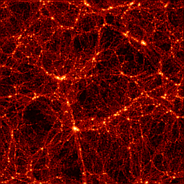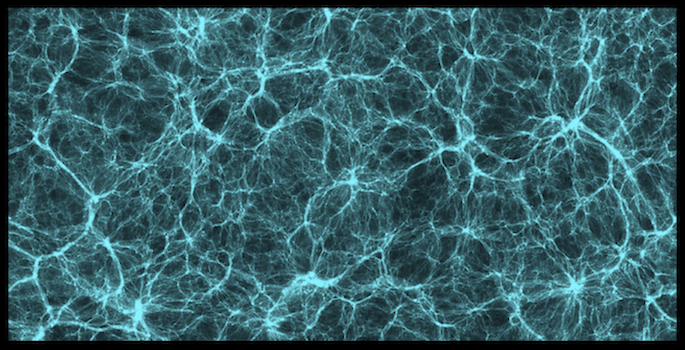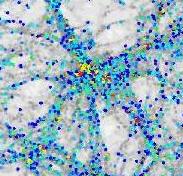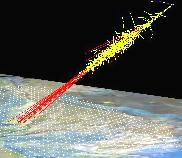

My research lies in the area of large scale structure formation in the universe. How did a highly homogeneous and smooth post-Big Bang universe develop the complex large-scale structures (galaxies, clusters of galaxies, etc.) that we see today? According to the observational evidence, structure in the universe formed mainly through gravitational instability: regions in the early universe that happened to be slightly more dense than their surrounding space collapsed under the force of their own self-gravity to form compact clumps of matter. These clumps, in turn, pulled by each other's gravity, often merged to form even more massive systems. In the currently favored theoretical picture, this simple process has accounted for almost all of the structure present in the dark matter distribution. However, we cannot see dark matter even though it makes up most of the mass in the universe. What we do see tracing the structure of the universe on large scales is galaxies. Unfortunately, the formation of galaxies is a poorly understood process, involving more complex physics than simply the gravity that governs the evolution of dark matter. Gas dynamics and cooling, star formation, supernova explosions, and galaxy mergers are examples of physics that most likely play a significant role in galaxy formation.
My research is mainly focused on understanding the relation between the galaxy and dark matter spatial distributions (also known as the "bias" between galaxies and mass). I approach this problem from both the observational and the theoretical sides. On the observational side, I work on empirically constraining the bias using measurements of galaxy clustering from the Sloan Digital Sky Survey (SDSS), as well as other galaxy surveys. On the theoretical side, I study what we can learn about the physics of galaxy formation from these constraints.
Recently, I have also become interested in Ultra-high-energy cormic rays (UHECRs). These are incredibly energetic particles (greater than 10EeV) that hit the earth's atmosphere and produce enormous showers of lower energy particles. Detecting these showers and reconstructing the energies and arrival directions of the incoming UHECRs requires experiments with large surface ground arrays of detectors or air fluoresence detectors. The origic of UHECRs is unknown because their arrival directions cannot be determined with sufficient accuracy. However, large experiments (such as the Pierre Auger experiment) have now collected enough data to make statistical studies possible. Using Pierre Auger data, I am working on correlating the spatial distribution of UHECRs with potential astrophysical sources.
 |
I am working on a project titled "Large Suite of Dark Matter Simulations" (LasDamas), to run on the order of 500 cosmological N-body simulations. The goal of the project is twofold: (1) to construct mock galaxy catalogs for the SDSS survey for the purpose of estimating statistical and systematic errors in measurements of galaxy clustering, and (2) to study the detailed properties of dark matter halos. |
LasDamas |
 |
The Sloan Digital Sky Survey (SDSS) is an ambitious astronomical survey that is imaging about a quarter of the sky and measuring spectra and redshifts for approximately one million galaxies. Over the past few years, I have been working on analyzing SDSS data to characterize the clustering of galaxies on both large and small scales. I have also been working on theoretical techniques to model SDSS data. |
SDSS |
 |
For many years, I have been working on modeling the relation between the galaxy and dark matter distributions. I mostly focus on halo occupation distribution (HOD) models, which describe the bias as the way in which galaxies populate dark matter halos. I am interested in both constraining HOD models using measurements of galaxy clustering, and studying what we can learn from these constraints about galaxy formation physics and the cosmological model. |
Biased Galaxy Formation |
 |
I have recently started working with Pierre Auger data to study the spatial distribution of ultra-high energy cosmic rays (UHECRs). The goal of my work is to probe the astrophysical origin of UHECRs. |
UHECRs |